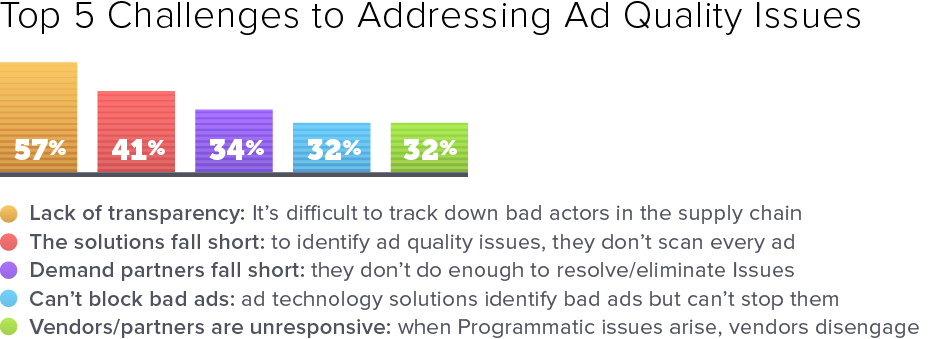Publishers still seek a solution to their #1 issue (and it's not GDPR)
Last Friday, GDPR went into full effect. Of course, that was big news. Articles about the new EU privacy regulations seemed to pop up everywhere we looked. So, we thought it might be refreshing to start this week with a look at something different.
At the beginning of the year, we surveyed well over 100 digital Ad Ops professionals in order to take their collective pulse on the industry challenges they expected to face in 2018. It was important for us to understand the various Ad Ops perspectives and outlooks for the new year.
Now that we're nearing the halfway point, it might be helpful to circle back and share a few of those insights in the context of industry developments so far.
In early January, most participants felt that a number of issues that challenged their operations in 2017 were likely to become even more concerning in 2018:

- 63% of publishers felt that ad quality issues had not improved or had gotten even worse over the course of 2017.
- 33% had a heightened concern about challenges posed by the EU’s GDPR initiative.
- 75% of participants believed ad quality issues (bad ads) were a significant cause of website latency and that, in turn, reduces site engagement by consumers, hurt publisher ad revenues and reflect poorly on the media brand.
- 28% of all display ads have at least one significant quality issue (based on Ad Lightning research published early last year)
Since the start of 2018, redirects and malware have become more prevalent than ever, even hitting the mainstream news. Some experts are now predicting that GDPR may make malvertising more profitable for bad actors and may even lead to an increase in malicious ad practices.
Most survey participants felt that their advertising partners and tech solutions fall short of addressing core challenges:

However, many participants were also optimistic about forthcoming technologies that will enable them to gain greater control of significant issues, especially publisher-side ad blocking solutions:

- 73% believed publisher-side ad blockers will have the most positive impact on ad quality.
The advent of publisher-side ad blockers topped the list of promising developments for 2018:
Since the beginning of the year, some things have changed in the area of consumer-side ad blocking. And unfortunately, some things have stayed the same.
Google has launched their ad blocking capabilities in Chrome and non-Chrome consumer-side ad blocking has increased both in Europe and in the U.S. Of course when consumers use ad blocking tools or the ad blocking capabilities in Chrome, that has a negative impact on publisher ad revenue: No ad served, no ad revenue.
Meanwhile, the IAB continues to recommend that publishers respond to consumer-side ad blocking by simply asking site visitors to turn the blocker off. Throughout the first half of the year, numerous articles continued to suggest that the best blocker-busting options for publishers are to switch away from an ad revenue model (go with a consumer pay model) or improve the user experience so much that consumers choose to stop blocking ads. None of these are realistic long-term solutions for most ad-supported publishers. Many of the most serious experiential issues are created by problems within the programmatic ecosystem which remain outside of the publisher’s control. That’s why publisher-side ad blocking is so critical.
Early in the year, publishers were bullish about the promise of publisher-side ad blockers. So far, however, the smattering of early solutions fall short of offering the level of control and transparency required to make ad-blocking work in a publisher-centric way.
With all of the talk about GDPR, let’s not lose sight of the number one issue: publisher-side ad blocking. So far in 2018, publishers haven’t found what they’re looking for. Here’s to a better second half!

.png)